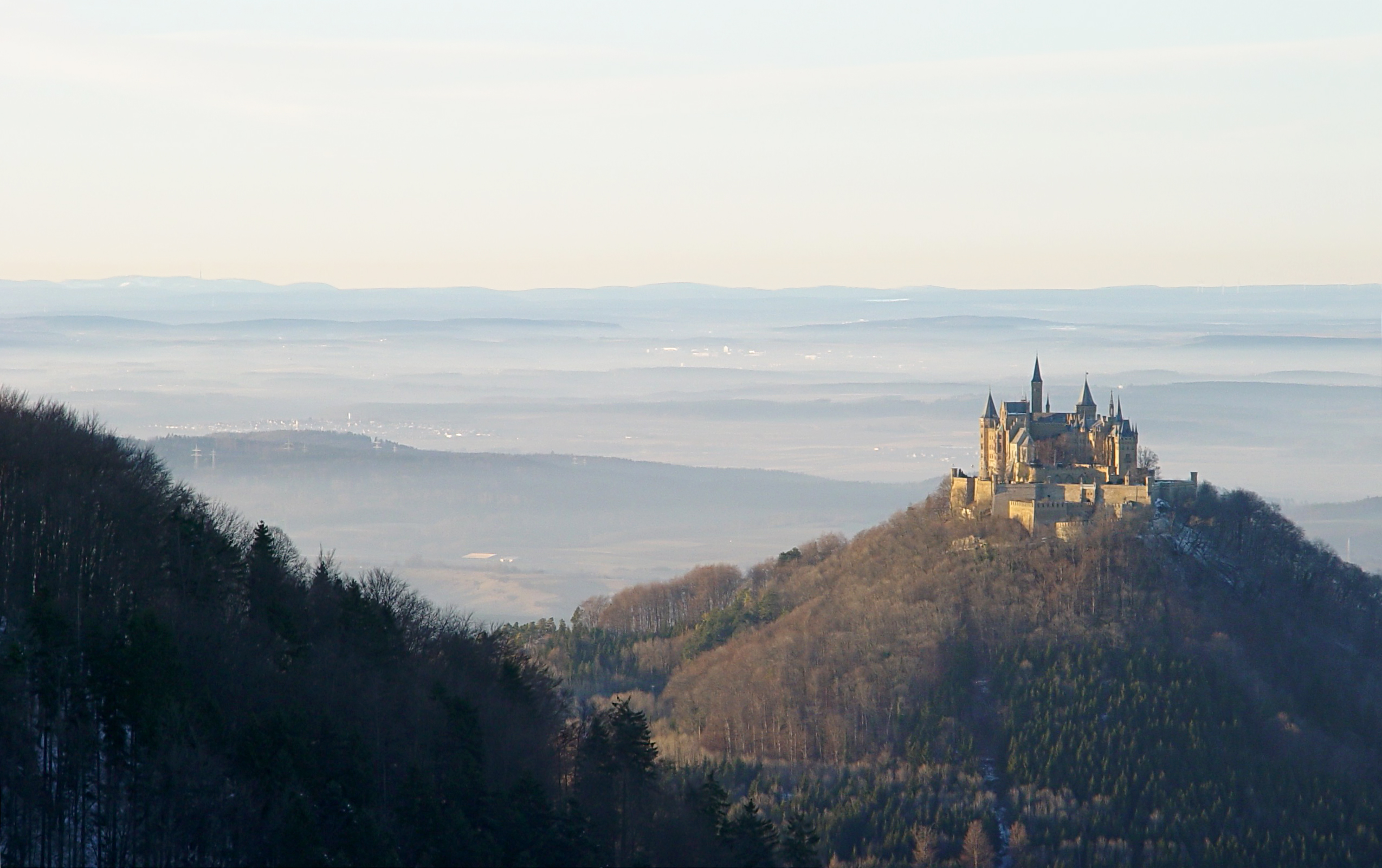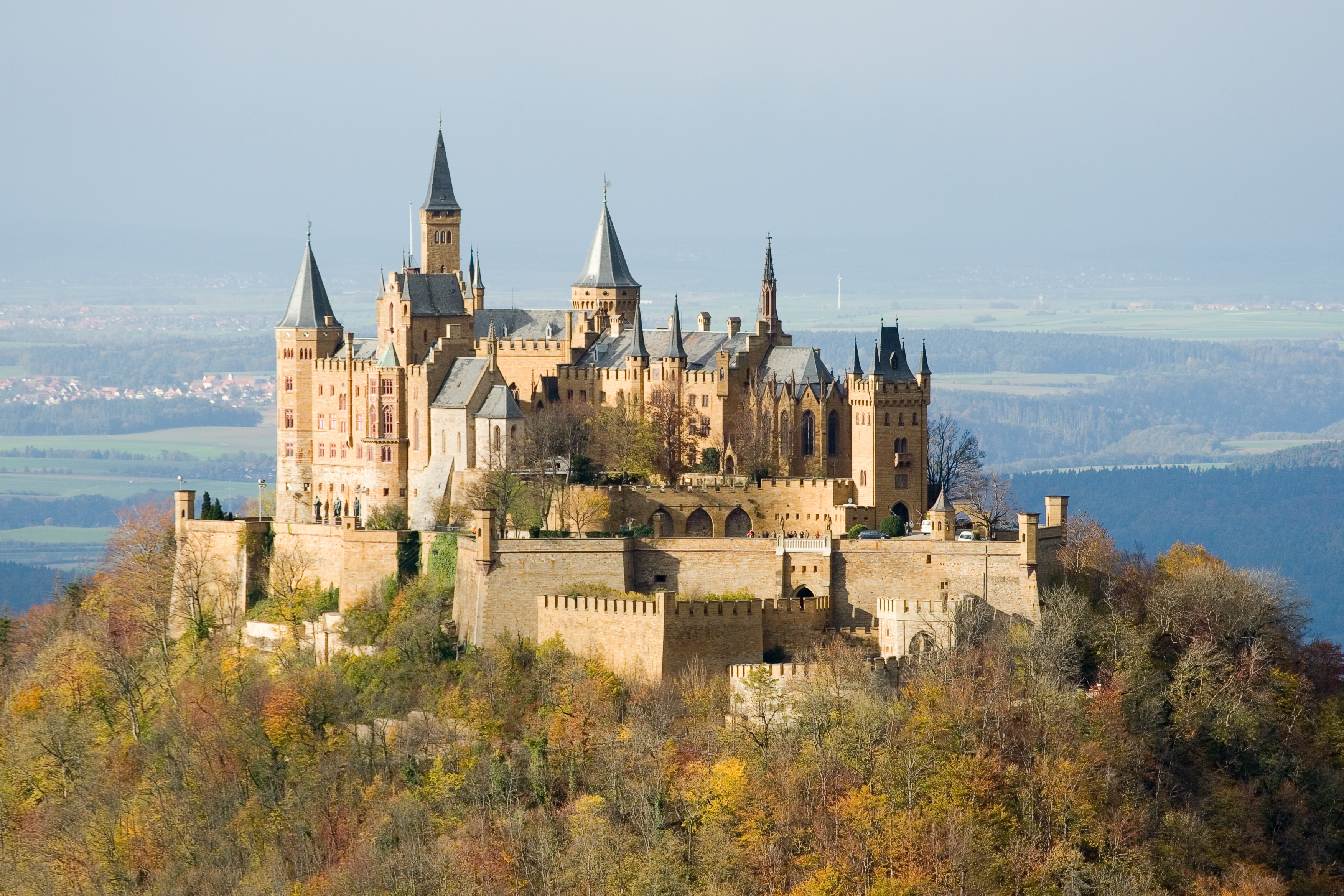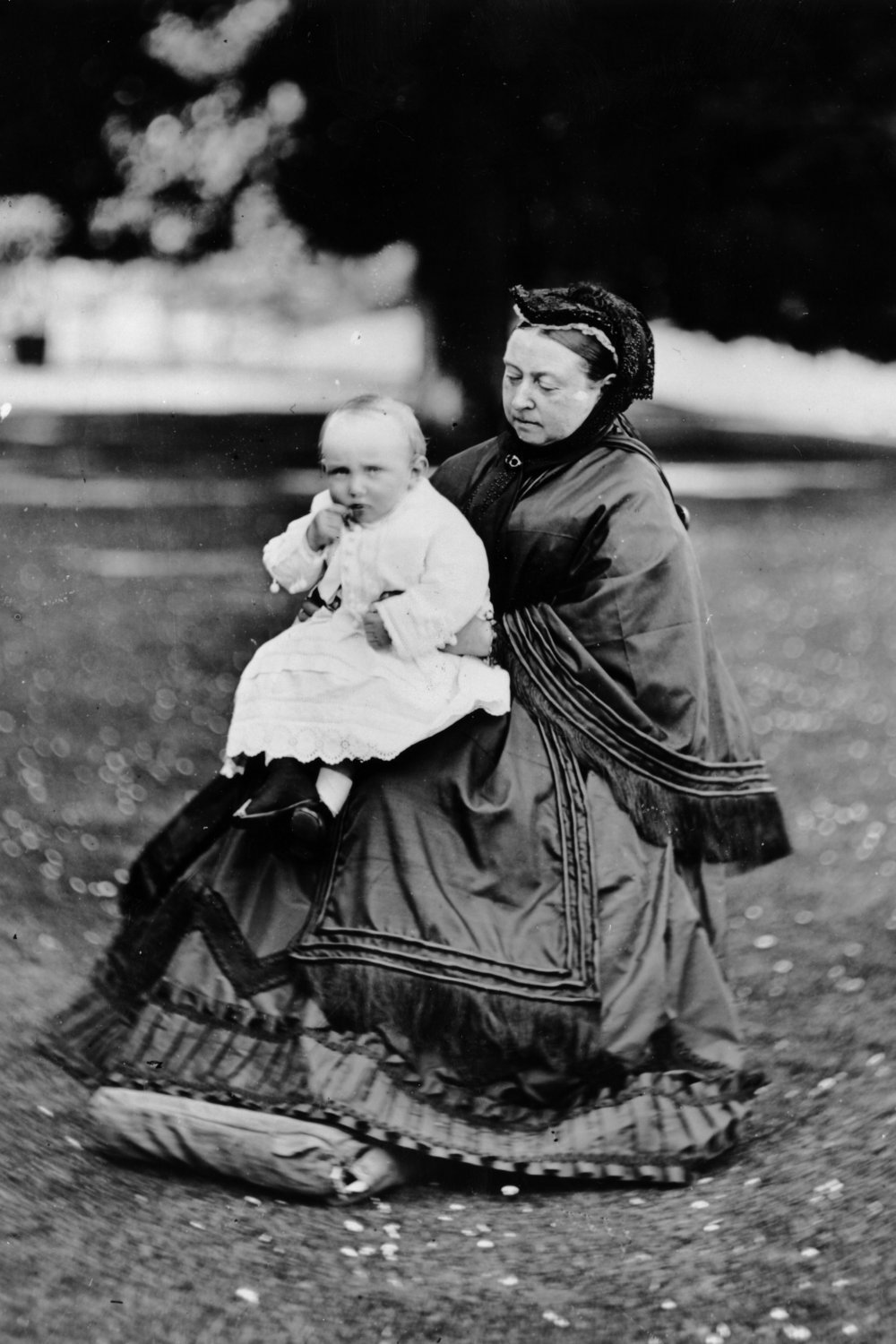|
Hohenzollern Castle
Hohenzollern Castle ( ) is the ancestral seat of the imperial House of Hohenzollern. The third of three hilltop castle, hilltop castles built on the site, it is located atop Hohenzollern (mountain), Mount Hohenzollern, above and south of Hechingen, on the edge of the Swabian Jura of central Baden-Württemberg, Germany. The name derives from :de:Söller, Söller (terrace) from Latin ''solarium.'' The first castle on the mountain was constructed in the early 11th century. Over the years the House of Hohenzollern split several times, but the castle remained in the House of Hohenzollern#Swabian senior branch, Swabian branch, the dynastic seniors of the House of Hohenzollern#Franconian branch, Franconian-Brandenburgian cadet branch that later acquired its own imperial throne. This castle was completely destroyed in 1423 after a ten-month siege by the Free imperial city, free imperial cities of Swabia. The second castle, a larger and sturdier structure, was constructed from 1454 to 1 ... [...More Info...] [...Related Items...] OR: [Wikipedia] [Google] [Baidu] |
House Of Hohenzollern
The House of Hohenzollern (, ; , ; ) is a formerly royal (and from 1871 to 1918, imperial) German dynasty whose members were variously princes, Prince-elector, electors, kings and emperors of Hohenzollern Castle, Hohenzollern, Margraviate of Brandenburg, Brandenburg, Prussia, the German Empire, and Kingdom of Romania, Romania. The family came from the area around the town of Hechingen in Swabia during the late 11th century and took their name from Hohenzollern Castle. The first ancestors of the Hohenzollerns were mentioned in 1061. The Hohenzollern family split into two branches, the Catholic Church, Catholic Swabian branch and the Protestantism, Protestant Burgraviate of Nuremberg#List of burgraves, Franconian branch,''Genealogisches Handbuch des Adels, Fürstliche Häuser'' XIX. "Haus Hohenzollern". C.A. Starke Verlag, 2011, pp. 30–33. . which ruled the Burgraviate of Nuremberg and later became the Brandenburg-Prussian branch. The Swabian branch ruled the principalities of Hoh ... [...More Info...] [...Related Items...] OR: [Wikipedia] [Google] [Baidu] |
Baden-Württemberg
Baden-Württemberg ( ; ), commonly shortened to BW or BaWü, is a states of Germany, German state () in Southwest Germany, east of the Rhine, which forms the southern part of Germany's western border with France. With more than 11.07 million inhabitants across a total area of nearly , it is the third-largest German state by both List of German states by area, area (behind Bavaria and Lower Saxony) and List of German states by population, population (behind North Rhine-Westphalia and Bavaria). The List of cities in Baden-Württemberg by population, largest city in Baden-Württemberg is the state capital of Stuttgart, followed by Mannheim and Karlsruhe. Other major cities are Freiburg im Breisgau, Heidelberg, Heilbronn, Konstanz, Pforzheim, Reutlingen, Tübingen, and Ulm. Modern Baden-Württemberg includes the historical territories of Baden, Prussian Province of Hohenzollern, Hohenzollern, and Württemberg. Baden-Württemberg became a state of West Germany in April 1952 through ... [...More Info...] [...Related Items...] OR: [Wikipedia] [Google] [Baidu] |
Frederick II Of Prussia
Frederick II (; 24 January 171217 August 1786) was the monarch of Prussia from 1740 until his death in 1786. He was the last Hohenzollern monarch titled ''King in Prussia'', declaring himself '' King of Prussia'' after annexing Royal Prussia from the Polish–Lithuanian Commonwealth in 1772. His most significant accomplishments include military successes in the Silesian wars, reorganisation of the Prussian Army, the First Partition of Poland, and patronage of the arts and the Enlightenment. Prussia greatly increased its territories and became a major military power in Europe under his rule. He became known as Frederick the Great () and was nicknamed "Old Fritz" (). In his youth, Frederick was more interested in music and philosophy than war, which led to clashes with his authoritarian father, Frederick William I of Prussia. However, upon ascending to the throne, he attacked and annexed the rich Austrian province of Silesia in 1742, winning military acclaim. He became an ... [...More Info...] [...Related Items...] OR: [Wikipedia] [Google] [Baidu] |
Crown Of Wilhelm II
The Crown of Wilhelm II (), also known as the Hohenzollern Crown (''Hohenzollern Krone''), is the 1888 crown made for Wilhelm II, German Emperor, in his role as King of Prussia. The crown is surmounted by a diamond-studded cross which rests on a large sapphire. These rest on eight half-arches rising from the base that are adorned with 142 rose-cut diamonds and 18 diamonds. Eight large pearls are mounted between the arches. When Wilhelm abdicated in 1918 he was permitted to retain the jewels, which included the Hohenzollern crown. To protect it from theft and destruction during World War II World War II or the Second World War (1 September 1939 – 2 September 1945) was a World war, global conflict between two coalitions: the Allies of World War II, Allies and the Axis powers. World War II by country, Nearly all of the wo ..., it was hidden in a wall in the crypt of a church. After the war it was returned to the Hohenzollern family and is now kept at the fam ... [...More Info...] [...Related Items...] OR: [Wikipedia] [Google] [Baidu] |
Kaiser Wilhelm II
Wilhelm II (Friedrich Wilhelm Viktor Albert; 27 January 18594 June 1941) was the last German Emperor and King of Prussia from 1888 until his abdication in 1918, which marked the end of the German Empire as well as the Hohenzollern dynasty's 300-year rule of Prussia. Born during the reign of his granduncle Frederick William IV of Prussia, Wilhelm was the son of Prince Frederick William and Victoria, Princess Royal. Through his mother, he was the eldest of the 42 grandchildren of Queen Victoria of the United Kingdom. In March 1888, Wilhelm's father, Frederick William, ascended the German and Prussian thrones as Frederick III. Frederick died just 99 days later, and his son succeeded him as Wilhelm II. In March 1890, the young Kaiser dismissed longtime Chancellor Otto von Bismarck and assumed direct control over his nation's policies, embarking on a bellicose "New Course" to cement Germany's status as a leading world power. Over the course of his reign, the German colonia ... [...More Info...] [...Related Items...] OR: [Wikipedia] [Google] [Baidu] |
Wilhelm, German Crown Prince
Wilhelm, German Crown Prince, Crown Prince of Prussia (Friedrich Wilhelm Victor August Ernst; 6 May 1882 – 20 July 1951) was the eldest child of the last German emperor, Wilhelm II, and his consort Augusta Victoria of Schleswig-Holstein, and thus a great-grandson of Queen Victoria, and distant cousin to many British royals, such as Queen Elizabeth II and King Charles III. As Emperor Wilhelm's heir, he was the last Crown Prince of the German Empire and the Kingdom of Prussia, until the German Revolution of 1918-1919, abolition of the monarchy. Wilhelm became crown prince at the age of six in 1888, when his grandfather Frederick III, German Emperor, Frederick III died and his father became emperor. He was crown prince for 30 years until the Abdication of Wilhelm II, fall of the empire on 9 November 1918. During World War I, he commanded the 5th Army (German Empire), 5th Army from 1914 to 1916 and was commander of the Army Group German Crown Prince (German Empire), Army Group G ... [...More Info...] [...Related Items...] OR: [Wikipedia] [Google] [Baidu] |
German Emperors
The German Emperor (, ) was the official title of the head of state and Hereditary monarchy, hereditary ruler of the German Empire. A specifically chosen term, it was introduced with the 1 January 1871 constitution and lasted until the abdication of Wilhelm II was announced on 9 November 1918. The Holy Roman Emperor is sometimes also called "German Emperor" when the historical context is clear, as derived from the Holy Roman Empire's official name of "Holy Roman Empire of the German Nation" from 1512. Following the German Revolution of 1918–1919, revolution of 1918, the head of state was the President of Germany (1919–1945), president of the Reich (), beginning with Friedrich Ebert. German Empire (1848–1849) In the wake of the German revolutions of 1848–1849, revolutions of 1848 and during the German Empire (1848–1849), Frederick William IV of Prussia, King Friedrich Wilhelm IV of Prussia was offered the title "Emperor of the Germans" () by the Frankfurt Parliament in ... [...More Info...] [...Related Items...] OR: [Wikipedia] [Google] [Baidu] |
Châteaux Of The Loire Valley
The châteaux of the Loire Valley () are part of the architectural heritage of the historic towns of Amboise, Angers, Blois, Chinon, Montsoreau, Orléans, Saumur, and Tours along the river Loire in France. They illustrate Renaissance ideals of design in France. The châteaux of the Loire Valley number over three hundred, ranging from practical fortification, fortified castles from the 10th century to splendid residences built half a millennium later. When the French kings began constructing their huge châteaux in the Loire Valley, the nobility, drawn to the seat of power, followed suit, attracting the finest architects and landscape designers. The châteaux and their surrounding gardens are cultural monuments which embody the ideals of the Renaissance and The Enlightenment, Enlightenment. Many of the châteaux were built on hilltops, such as the Château d'Amboise, while the only one built in the riverbed is the Château de Montsoreau. Many had exquisite churches on the grounds or ... [...More Info...] [...Related Items...] OR: [Wikipedia] [Google] [Baidu] |
Frederick William IV Of Prussia
Frederick William IV (; 15 October 1795 – 2 January 1861), the eldest son and successor of Frederick William III of Prussia, was King of Prussia from 7 June 1840 until his death on 2 January 1861. Also referred to as the "romanticist on the throne", he was deeply religious and believed that he ruled by divine right. He feared revolutions, and his ideal state was one governed by the Christian estates of the realm rather than a constitutional monarchy. In spite of his conservative political philosophy, he initially pursued a moderate policy of easing press censorship, releasing political prisoners and reconciling with the Catholic population of the kingdom. During the German revolutions of 1848–1849, he was initially forced to accommodate the people's revolutionary sentiments, although he rejected the title of Emperor of the Germans offered by the Frankfurt Parliament in 1849, believing that it did not have the right to make such an offer. In December 1848, he dissolved the Pru ... [...More Info...] [...Related Items...] OR: [Wikipedia] [Google] [Baidu] |
Lineal Descendant
A lineal or direct descendant, in legal usage, is a blood relative in a person's direct line of descent – the children, grandchildren, great-grandchildren, etc. In a legal procedure sense, lineal descent refers to the acquisition of estate by inheritance by parent from grandparent and by child from parent, whereas collateral descent refers to the acquisition of estate or real property by inheritance by sibling from sibling, and cousin from cousin. Adopted children, for whom adoption statutes create the same rights of heirship as children of the body, come within the meaning of the term "lineal descendants," as used in a statute providing for the non-lapse of a devise where the devisee predeceases the testator A testator () is a person who has written and executed a last will and testament that is in effect at the time of their death. It is any "person who makes a will."Gordon Brown, ''Administration of Wills, Trusts, and Estates'', 3d ed. (2003), p. ... but leaves li ... [...More Info...] [...Related Items...] OR: [Wikipedia] [Google] [Baidu] |
Thirty Years' War
The Thirty Years' War, fought primarily in Central Europe between 1618 and 1648, was one of the most destructive conflicts in History of Europe, European history. An estimated 4.5 to 8 million soldiers and civilians died from battle, famine, or disease, while parts of Germany reported population declines of over 50%. Related conflicts include the Eighty Years' War, the War of the Mantuan Succession, the Franco-Spanish War (1635–1659), Franco-Spanish War, the Torstenson War, the Dutch-Portuguese War, and the Portuguese Restoration War. The war had its origins in the 16th-century Reformation, which led to religious conflict within the Holy Roman Empire. The 1555 Peace of Augsburg attempted to resolve this by dividing the Empire into Catholic and Lutheran states, but the settlement was destabilised by the subsequent expansion of Protestantism beyond these boundaries. Combined with differences over the limits of imperial authority, religion was thus an important factor in star ... [...More Info...] [...Related Items...] OR: [Wikipedia] [Google] [Baidu] |
Swabia
Swabia ; , colloquially ''Schwabenland'' or ''Ländle''; archaic English also Suabia or Svebia is a cultural, historic and linguistic region in southwestern Germany. The name is ultimately derived from the medieval Duchy of Swabia, one of the German stem duchies, representing the historic settlement area of the Germanic tribe alliances named Alemanni and Suebi. This territory would include all of the Alemannic German area, but the modern concept of Swabia is more restricted, due to the collapse of the duchy of Swabia in the thirteenth century. Swabia as understood in modern ethnography roughly coincides with the Swabian Circle of the Holy Roman Empire as it stood during the early modern period, now divided between the states of Bavaria and Baden-Württemberg. Swabians (''Schwaben'', singular ''Schwabe'') are the natives of Swabia and speakers of Swabian German. Their number was estimated at close to 0.8 million by SIL Ethnologue as of 2006, compared to a total popula ... [...More Info...] [...Related Items...] OR: [Wikipedia] [Google] [Baidu] |






